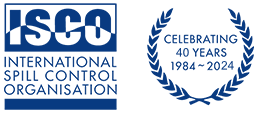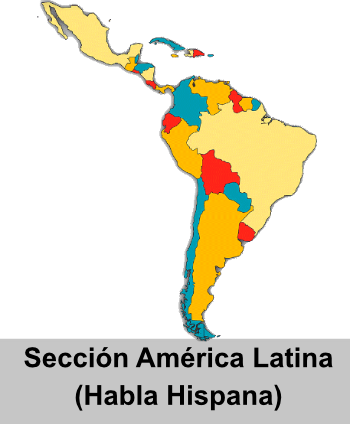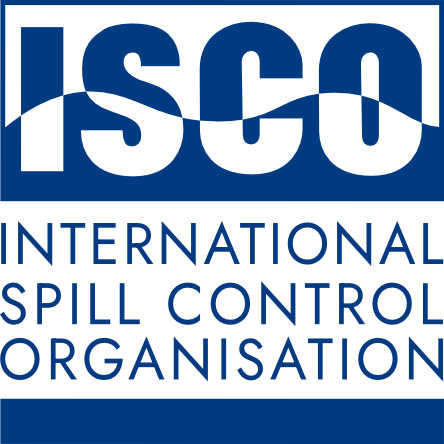This is part of a weekly column which provides the references and abstracts of new peer-reviewed scientific publications on oil spills.

Contributed by Dr Merv Fingas, this weekly column will provide the references and abstracts of new peer-reviewed scientific publications on oil spills. These references are selected on the basis of those papers that provide new insights into the fate, effects and control of oil spills.
Readers may choose to obtain the full publications and to do so, one of three methods is suggested; contact your library, search the internet with the DOI (digital object identifier) provided, or search the internet for the exact title. These are given in the order of likely success in obtaining the article. We hope that this provides useful information. Merv Fingas, ISCO colleague.
25. Identification of bilge oil with lubricant: Recent oil spill case studies,
Lee, D., Seo, J.M., Kooistra, K., Lee, H. (2022) Environmental Research, 212, art. no. 113325,
DOI: 10.1016/j.envres.2022.113325
ABSTRACT: Oil spills have many adverse effects on the marine environment. Bilge oil spills occur frequently in the sea as a result of maritime accidents or illegal discharge. It is difficult to unambiguously identify the specific sources of such spills because bilge oil contains a mixture of fuel oil and lubricant. In this study, bilge oils with different fuel oil/lubricant ratios were prepared and analyzed using a modified version of the CEN/TR methodology (European Committee for Standardization, 2012). As the lubricant content of bilge oil increased, the intensity of the C20–C24 group, which is the commonly-used normalization compound group for fuel oil in the percentage weathering (PW) plot, also changed. Therefore, the mean area of the C15–C18 group, which was affected by the lubricant content, was used instead. Although heavy fuel oil is usually normalized to a hopane, bilge oil with a high lubricant content cannot be analyzed based on a mass spectrometry (MS)–PW plot; thus, heavy fuel oil-based bilge oil was normalized to a phytane in this study. Although hopanes and styrenes are unsuitable comparison compounds for heavy fuel oil-based bilge oil analysis, for light fuel oil-based bilge oil, hopanes and steranes could be applied as diagnostic ratio comparisons when the lubricant peak was clearly detected in the chromatograms of the spilled and suspected oil samples. By applying the CEN/TR methodology according to this approach, the similarities between spilled and suspected oil samples were more easily revealed. In addition, the field applicability of the proposed method was tested for four actual oil spills.
26. Diluted bitumen-induced alterations in aerobic capacity, swimming performance, and post-exercise recovery in juvenile sockeye salmon (Oncorhynchus nerka),
Lin, F., Ni, L., Kennedy, C.J.
(2022) Aquatic Toxicology, 247, art. no. 106150,
DOI: 10.1016/j.aquatox.2022.106150
ABSTRACT: The transportation of heavy crudes such as diluted bitumen (dilbit) sourced from Canadian oil sands through freshwater habitat requires the generation of information that will contribute to risk assessments, spill modelling, management, and remediation for the protection of aquatic organisms. Juvenile sockeye salmon (Oncorhynchus nerka) were exposed acutely (96 h) or subchronically (28 d) to the water-soluble fraction (WSFd) of Cold Lake Blend dilbit at initial total polycyclic aromatic compound (TPAC) concentrations of 0, 13.7, 34.7, and 124.5 µg/L. A significant induction (>3-fold) of hepatic liver ethoxyresorufin-O-deethylase (EROD) activity was induced by 96 h in fish exposed to [TPAC] ≥ 34.7 µg/L and at ≥13.7 µg/L for a 28 d exposure. Exposure resulted in a typical physiological stress response and disturbance of ion homeostasis; this included elevations in plasma [cortisol], [lactate], [Na+], and [Cl−], and significant reductions in muscle [glycogen]. Critical swimming speed (Ucrit) was significantly reduced (28.4%) in the acute exposure at [TPAC] 124.5 µg/L; reductions of 14.2% and 35.4% were seen in fish subchronically exposed at the two highest concentrations. Reductions in Ucrit were related to significant reductions in aerobic scope (24.3-46.6%) at [TPAC]s of 34.7 and 124.5 µg/L, respectively. Exposure did not impair the ability to mount a secondary stress response following burst exercise, however, the time required for biochemical parameters to return to baseline values was prolonged. Alterations in critical systems supporting swimming, exercise recovery and the physiological stress response could result in decreased salmonid fitness and contribute to population declines if a dilbit spill occurs.
27. Experimental investigations on the vertical distribution and properties of oil-mineral aggregates (OMAs) formed by different clay minerals,
Yu, Y., Qi, Z., Xiong, D., Li, W., Yu, X., Sun, R. (2022) Journal of Environmental Management, 311, art. no. 114844,
DOI: 10.1016/j.jenvman.2022.114844
ABSTRACT: After oil spills, the floating oil may interact with suspended minerals to form the oil-mineral aggregates (OMAs) in turbulent environments. In this work, a flume was used in conjunction with a settling device to investigate the vertical distribution and properties of OMAs formed by different clay minerals. The density and size of OMAs depend on the density and surface properties of the constituent particles, which also affect the vertical distribution of dispersed oil. Density of oil-montmorillonite aggregates increased from 1165 to 1897 kg/m3 within 6 h test. Among the four minerals, montmorillonite displayed the highest affinity with dispersed oil and the most significant modification of oil-water interfacial tension. Oil dispersion efficiency was significantly greater and reached 39.3% in the presence of montmorillonite at 300 mg/L compared with the control group (17.6%). Particle concentration is the most important factor for the capture of oil and participation of particles during the OMA formation, while the zeta potential and hydrophobicity have nonsignificant effect on the two processes. Cation exchange capacity has a moderate effect on the sunken oil formation, which is also the second main factor governing the particle participation. Particle size plays a second leading role in governing the sunken oil formation but with a minor contribution of the particle participation.
28. A perspective on the state of Deepwater Horizon oil spill related tarball contamination and its impacts on Alabama beaches, Clement, T.P., John, G.F. (2022) Current Opinion in Chemical Engineering, 36, art. no. 100799,
DOI: 10.1016/j.coche.2022.100799
ABSTRACT: The Deepwater Horizon (DWH) accident spilled over 785 million liters of crude oil into the Gulf of Mexico (GOM). A substantial fraction of the spilled oil impacted the northern GOM shoreline, including Alabama beaches. The beached oil was in the form of brownish-orange, water-in-oil emulsion, commonly known as mousse. Although significant remediation efforts were undertaken to clean the contaminated beaches, oil residues in the form of tarballs continue to contaminate various GOM beaches. This study reviews recent literature related to the DWH tarball contamination problem and its impacts on GOM beaches, primarily focusing on the beaches located in Alabama. Though the DWH oil spill is an unfortunate disaster, for researchers it constitutes a large-scale experiment conducted on a natural system. This anthropogenic experiment has taught scientists numerous useful lessons and has also posed several challenging questions, some of which are discussed in this review.
29. Estimation of Dermal Exposure to Oil Spill Response and Clean-up Workers after the Deepwater Horizon Disaster,
Stewart, P.A., Gorman Ng, M., Cherrie, J.W., Jones, A., Kwok, R.K., Blair, A., Engel, L.S., Sandler, D.P., Stenzel, M.R. (2022) Annals of work exposures and health, 66 (1), pp. i234-i246.
DOI: 10.1093/annweh/wxab073
ABSTRACT: The GuLF STUDY is investigating health outcomes associated with oil spill-related chemical exposures among workers involved in the spill response and clean-up following the Deepwater Horizon disaster. Due to the lack of dermal exposure measurements, we estimated dermal exposures using a deterministic model, which we customized from a previously published model. Workers provided information on the frequency of contact with oil, tar, chemical dispersants applied to the oil spill and sea water, as well as the use of protective equipment, by job/activity/task. Professional judgment by industrial hygienists served as a source of information for other model variables. The model estimated dermal exposures to total hydrocarbons (THC), benzene, ethylbenzene, toluene, xylene, n-hexane (BTEX-H), polycyclic aromatic hydrocarbons (PAHs), and dispersants in GuLF DREAM units (GDUs). Arithmetic means (AMs) of THC exposure estimates across study participants ranged from <0.02 to 5.50 GDUs for oil and <0.02 to 142.14 GDUs for tar. Statistical differences in the estimates were observed among the AMs of the estimates for some broad groups of worker activities over time and for some time periods across the broad groups of activities. N-Hexane had ranges similar to THC for oil exposures (e.g. AMs up to 2.22 GDUs) but not for tar (up to 5.56 GDUs). Benzene, ethylbenzene, toluene, and xylene, in contrast, were characterized by higher exposure levels than THC for oil (AMs up to 12.77, 12.17, 17.45, and 36.77 GDUs, respectively) but lower levels than THC to tar (AMs up to 3.69, 11.65, 42.37, and 88.18 GDUs, respectively). For PAHs, the AMs were as high as 219.31 and 587.98 for oil and tar, respectively. Correlations of these seven substances to each other were high (>0.9) for most of the substances in oil but were lower for some of the substances in tar. These data were linked to the study participants to allow investigation of adverse health effects that may be related to dermal exposures.
30. Linear Relationships Between Total Hydrocarbons and Benzene, Toluene, Ethylbenzene, Xylene, and n-Hexane during the Deepwater Horizon Response and Clean-up,
Groth, C.P., Huynh, T.B., Banerjee, S., Ramachandran, G., Stewart, P.A., Quick, H., Sandler, D.P., Blair, A., Engel, L.S., Kwok, R.K., Stenzel, M.R. (2022) Annals of work exposures and health, 66 (1), pp. i71-i88.
DOI: 10.1093/annweh/wxab064
ABSTRACT: OBJECTIVES: Our objectives were to (i) determine correlations between measurements of THC and of BTEX-H, (ii) apply these linear relationships to predict BTEX-H from measured THC, (iii) use these correlations as informative priors in Bayesian analyses to estimate exposures. METHODS: We used a Bayesian left-censored bivariate framework for all 3 objectives. First, we modeled the relationships (i.e. correlations) between THC and each BTEX-H chemical for various overarching groups of measurements using linear regression to determine if correlations derived from linear relationships differed by various exposure determinants. We then used the same linear regression relationships to predict (or impute) BTEX-H measurements from THC when only THC measurements were available. Finally, we used the same linear relationships as priors for the final exposure models that used real and predicted data to develop exposure estimate statistics for each individual exposure group. RESULTS: Correlations between measurements of THC and each of the BTEX-H chemicals (n = 120 for each of BTEX, 36 for n-hexane) differed substantially by area of the Gulf of Mexico and by time period that reflected different oil-spill related exposure opportunities. The correlations generally exceeded 0.5. Use of regression relationships to impute missing data resulted in the addition of >23 000 n-hexane and 541 observations for each of BTEX. The relationships were then used as priors for the calculation of exposure statistics while accounting for censored measurement data. CONCLUSIONS: Taking advantage of observed relationships between THC and BTEX-H allowed us to develop robust exposure estimates where a large amount of data were missing, strengthening our exposure estimation process for the epidemiologic study.





